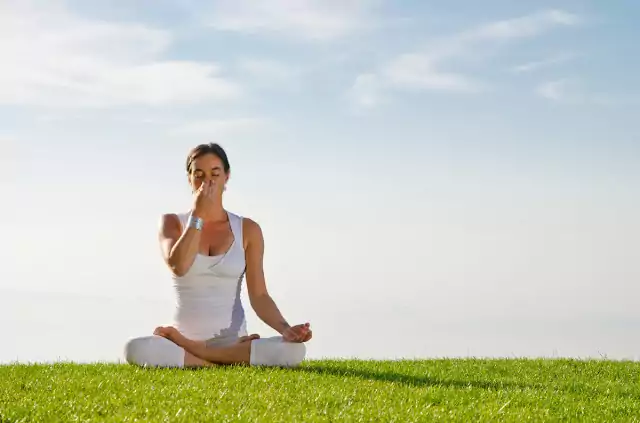Deep breathing is one of the best ways to stay focused and relaxed in any situation. According to Burton Goldberg, author of Alternative Medicine: The Definitive Guide (Celestial Arts, 2002), despite being an automatic process, the practice of breathing can lead to numerous health benefits that accompany an increase of oxygen to the body.
Many people don’t take full advantage of the healthy lungs that are their birth rite. Goldberg points out that it is common for people to use only a small portion of their lung capacity. Shallow breaths are drawn in and released quickly and thoughtlessly before the body has time to fully utilize the oxygen it so desperately needs.
Breathing Techniques for Mental and Emotional Health
It is helpful to understand the connection between breathing and state of mind. Using the breath to alter consciousness is considered “breathwork,” and is known to be useful for a number of health and wellness goals (Goldberg, 2002). Many health practitioners promote the use of breath to bring healing both to the overall body and to individual symptoms of distress. Counselors and therapists often use the breath as a means of swiftly bringing a client into a state of ease and connection with their inner resources.
Goldberg recommends practicing breathing techniques regularly to strengthen the lungs and develop good breathing habits. He also advises to use these techniques in times of stress, tension, or pain; to quickly and easily overcome any immediate mental or emotional obstacles.
Relaxation and Concentration with the “Three Part Breath“
Each inhalation is divided into three parts. First breathe deep into the belly, inflating it like a balloon. Then bring the breath up to fill the lungs. Finally, bring the air into the upper chest. Hold your breath for three seconds, then exhale. Repeat five times to bring oxygen to the entire body; improving peace of mind and focus for the task at hand.
Stress Reduction and Mental Clarity with the “Twenty Cycle Breath”
Take four quick breaths without pausing between inhaling and exhaling. Then take a long, slow breath. Repeat the whole process five times so that there are 20 quick breaths and five slow breaths in all. This breathing exercise quickly brings a calm and insightful mentality after confusion or upset. It can also be used for mood support, or just to switch thinking modes.
Stress Relief and Relaxation with “Pulse Breathing”
A pulse breath is done by inhaling and then exhaling forcefully. The pulse breathing exercise involves taking a deep breath, exhaling, and then following with a pulse breath. Continue by taking two deep breath cycles and then a pulse breath. Keep adding one regular deep breath before the pulse breath until reaching five deep breath cycles and a pulse breath. This exercise works to alleviate the pressing stress and overwhelm of an intense situation.
The Benefits of practicing Breathwork
Simple breathing techniques are easy to learn and work quickly to alleviate some of the most common complaints. Incorporating one or more of these exercises into a daily wellness regimen will have far reaching health benefits and contribute to the proper and rightful functioning of the all important lungs.
